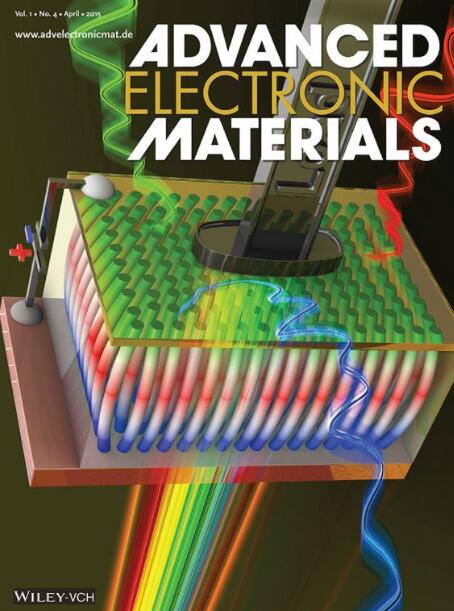基于石墨烯/ZnO异质结构的长期保留和自适应学习的光电荷阱记忆
IF 5.3
2区 材料科学
Q2 MATERIALS SCIENCE, MULTIDISCIPLINARY
引用次数: 0
摘要
光电神经形态器件有望实时处理非结构化生物特征数据,但在实现材料无毒性和长期突触保留以及对潜在机制的清晰理解方面仍然存在挑战。本文报道了一种基于石墨烯/ZnO纳米颗粒(GZO)异质结构的光电荷阱存储器(CTM),该存储器通过其大的光导增益和丰富的电荷阱位点解决了这些限制。与之前的纳米粒子/石墨烯光电探测器不同,这项工作利用界面陷阱介导的过程来实现稳定的光电神经形态功能,包括长期增强、保留和有效的再学习。GZO CTM表现出强大的电荷捕获特性,在e - 1损失点处电荷保留超过54 h,这归因于界面陷阱状态和GZO界面上的大量能量势垒。这些捕获的电荷可以实现稳定的增强和有效的记忆重编程,在部分记忆丢失后需要更少的脉冲。此外,基于GZO CTM特征的人工神经网络仿真表明,即使在噪声条件下,手写识别任务在20个训练周期内也具有快速收敛和接近统一的准确性。这项研究强调了陷阱工程GZO异质结构作为生物相容神经形态计算的可扩展、节能平台的潜力,特别是在需要稳定光存储器和实时信号处理的可穿戴系统中。本文章由计算机程序翻译,如有差异,请以英文原文为准。
Optical Charge Trap Memory Based on Graphene/ZnO Heterostructures for Long‐Term Retention and Adaptive Learning
Optoelectronic neuromorphic devices promise real‐time processing of unstructured biometric data, yet challenges remain in achieving material non‐toxicity and long‐term synaptic retention, along with a clear understanding of the underlying mechanisms. Here, an optical charge trap memory (CTM) is reported based on a graphene/ZnO nanoparticle (GZO) heterostructure that addresses these limitations through its large photoconductive gain and abundant charge trap sites. Distinct from previous nanoparticle/graphene photodetectors, the work leverages interfacial trap‐mediated processes to implement stable optoelectronic neuromorphic functionalities, including long‐term potentiation, retention, and efficient relearning. The GZO CTM exhibits robust charge trapping characteristics, with charge retention exceeding 54 h at the e−1 loss point, attributed to interfacial trap states and a substantial energy barrier at the GZO interface. These trapped charges enable stable potentiation and efficient memory reprogramming, requiring significantly fewer pulses after partial memory loss. Furthermore, artificial neural network simulations based on GZO CTM characteristics demonstrate rapid convergence and near‐unity accuracy in handwriting recognition tasks within 20 training epochs, even under noise conditions. This study highlights the potential of trap‐engineered GZO heterostructures as scalable, energy‐efficient platforms for biocompatible neuromorphic computing, particularly in wearable systems requiring stable optical memory and real‐time signal processing.
求助全文
通过发布文献求助,成功后即可免费获取论文全文。
去求助
来源期刊

Advanced Electronic Materials
NANOSCIENCE & NANOTECHNOLOGYMATERIALS SCIE-MATERIALS SCIENCE, MULTIDISCIPLINARY
CiteScore
11.00
自引率
3.20%
发文量
433
期刊介绍:
Advanced Electronic Materials is an interdisciplinary forum for peer-reviewed, high-quality, high-impact research in the fields of materials science, physics, and engineering of electronic and magnetic materials. It includes research on physics and physical properties of electronic and magnetic materials, spintronics, electronics, device physics and engineering, micro- and nano-electromechanical systems, and organic electronics, in addition to fundamental research.
 求助内容:
求助内容: 应助结果提醒方式:
应助结果提醒方式:


